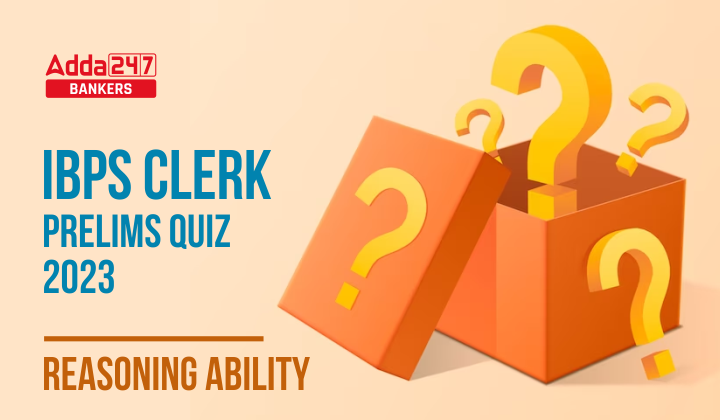Directions (1-4): In the following questions, assuming the given statement to be true, find which of the conclusion(s) among given conclusions is/are definitely true and then give your answers accordingly.
Q1. Statements: H = E ≥ B, F > V ≥ H, B > Y = U
Conclusions:
I. V > B
II. B > V
(a) Only I is true
(b) Only II is true
(c) Either I or II is true
(d) Neither I nor II is true
(e) Both I and II are true
Q2. Statements: M = N ≥ O = S, K > T ≥ M, S < Q < R
Conclusions:
I. T ≥ S
II. N ≥ Q
(a) Only I is true
(b) Only II is true
(c) Either I or II is true
(d) Neither I nor II is true
(e) Both I and II are true
Q3. Statements: Y ≥ R < E = G, P > U ≥ T = Y, G ≤ H < F
Conclusions:
I. P > R
II. E < F
(a) Only I is true
(b) Only II is true
(c) Either I or II is true
(d) Neither I nor II is true
(e) Both I and II are true
Q4. Statements: G = T ≥ R, H > S ≥ G, R = U < E ≤ W
Conclusions:
I. S ≥ U
II. T > E
(a) Only I is true
(b) Only II is true
(c) Either I or II is true
(d) Neither I nor II is true
(e) Both I and II are true
Q5. Which of the following symbols should replace the blank in the given expression in order to make the expression ‘A > P’ definitely true?
T > G < Y > R = A ≥ X > E __ P
(a) ≤
(b) ≥
(c) <
(d) =
(e) Either (b) or (d)
Therefore, option (e) is the correct answer.
Directions (6-10): In these questions, relationship between different elements is show in the statements. The statements are followed by conclusions. Study the conclusions based on the given statements and select the appropriate answer:
(a) If only conclusion I follows
(b) If only conclusion II follows
(c) If either conclusion I or II follows
(d) If neither conclusion I nor II follows
(e) If both conclusions I and II follow
Q6. Statements: K ≥ M > T, O = N < J > K
Conclusion I: T ≤ N
II: N < T
Q7. Statements: D < R, U ≤ Z, X > B > O, R ≤ U < O
Conclusion I: B > D
II: Z > R
Q8. Statements: Y = N, E = L < M, N ≥ S ≥ E
Conclusion I: Y > L
II: Y = L
Q9. Statements: P < V < X, E > H, R ≥ O ≥ L, H > V < L
Conclusion I: P < R
II: E > P
Q10. Statements: R > T = B, H ≥ D < S, L ≥ I = P, L < S < B
Conclusion I: R > P
II: H > S
Solutions
Solutions (1-4):
S1 Ans.(d):
Sol.
I. V > B – False
II. B > V – False
S2 Ans.(a)
Sol.
I. T ≥ S – True
II. N ≥ Q – False
S3 Ans.(e)
Sol.
I. P > R – True
II. E < F – True
S4 Ans.(a)
Sol.
I. S ≥ U – True
II. T > E – False
S5. Ans.(e)
Sol. T > G < Y > R = A ≥ X > E ≥ P
Or T > G < Y > R = A ≥ X > E = P
Solutions (6-10):
S6. Ans(c)
Sol. I: T≤N(False)
II: N<T (False)
S7. Ans(a)
Sol. I: B>D (True)
II: Z>R (False)
S8. Ans(c)
Sol. I: Y>L (False)
II: Y=L (False)
S9. Ans(e)
Sol. I: P<R (True)
II: E>P (True)
S10. Ans(a)
Sol. I: R>P (True)
II: H>S (False)





 GA Capsule for SBI Clerk Mains 2025, Dow...
GA Capsule for SBI Clerk Mains 2025, Dow...
 The Hindu Review October 2022: Download ...
The Hindu Review October 2022: Download ...
 SSC Calendar 2025 Under Review, Dates So...
SSC Calendar 2025 Under Review, Dates So...





